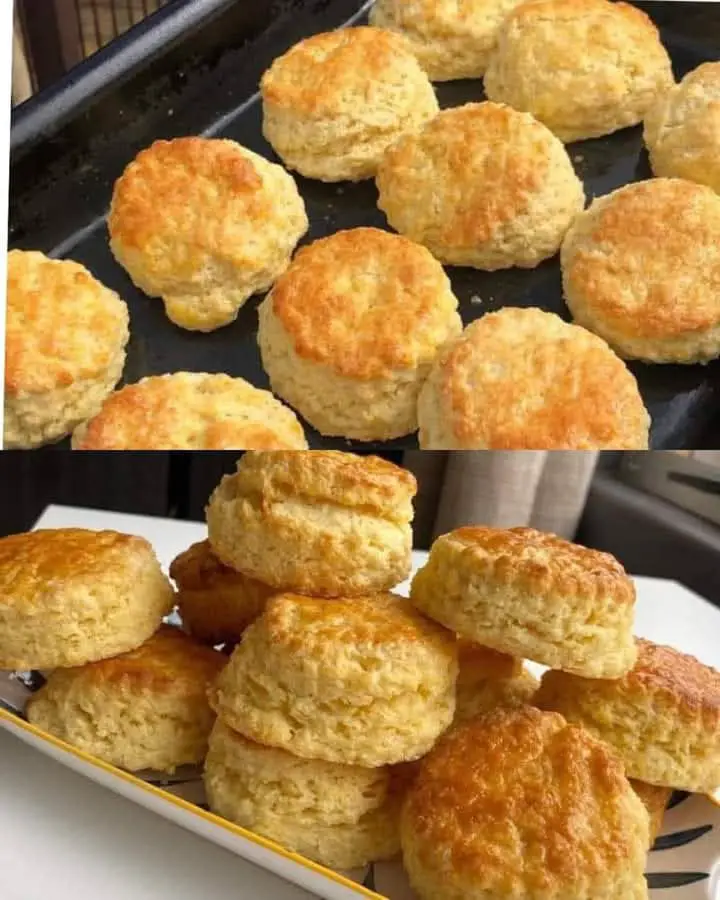Introduction: Scones are a quintessential part of British tea culture, loved for their crumbly, soft texture and versatility. Whether served with jam, clotted cream, or just a little butter, these treats are perfect for breakfast, tea time, or as a snack. Making homemade scones allows you to enjoy their fresh, warm aroma straight out of the oven. This classic scone recipe is simple yet results in perfect scones every time, with a light and airy texture that pairs wonderfully with your favorite spreads.
Ingredients:
2 cups (250g) all-purpose flour
1/4 cup (50g) granulated sugar
1 tablespoon baking powder
1/2 teaspoon salt
1/2 cup (115g) unsalted butter, cold and cubed
2/3 cup (160ml) milk (or heavy cream for richer scones)
1 large egg
1 teaspoon vanilla extract (optional)
1/4 cup (30g) raisins or currants (optional)
1 egg (for egg wash)
Instructions:
Preheat the oven to 400°F (200°C) and line a baking sheet with parchment paper or lightly grease it.
Combine dry ingredients: In a large mixing bowl, whisk together the flour, sugar, baking powder, and salt.
Cut in the butter: Add the cold, cubed butter to the dry ingredients. Use a pastry cutter, fork, or your fingers to rub the butter into the flour until the mixture resembles coarse crumbs with pea-sized pieces of butter.
Add wet ingredients: In a small bowl, whisk together the milk (or cream), egg, and vanilla extract (if using). Gradually pour the wet ingredients into the dry mixture, stirring gently until the dough just comes together.
Add raisins/currants (optional): If you’re making fruit scones, fold in the raisins or currants gently.
Shape the dough: Turn the dough out onto a lightly floured surface and knead it briefly until it holds together. Pat it into a round shape about 1-inch thick.
Cut the scones: Use a sharp knife or round cutter to cut the dough into 8 wedges or circles. Place them on the prepared baking sheet.
Egg wash: Beat the remaining egg with a tablespoon of milk and brush it over the tops of the scones for a golden, glossy finish.
Bake: Bake for 12-15 minutes or until the scones are lightly golden and cooked through. You can check by inserting a toothpick into the center—if it comes out clean, they’re done.
Cool and serve: Let the scones cool on a wire rack for a few minutes, then serve warm with clotted cream, jam, or butter.
Description:
Classic scones are light, buttery, and slightly sweet, with a soft and crumbly texture. These scones are perfect for any occasion, whether you’re hosting an afternoon tea or enjoying a quiet breakfast. The combination of butter and a touch of sugar gives them a rich flavor, while the optional dried fruit adds a bit of sweetness and texture. They are best served fresh, but can be enjoyed later if stored properly.
Tips:
Cold butter is key to achieving a flaky texture in scones. Don’t overwork the dough, as it will lead to tough scones.
If the dough feels too sticky, you can sprinkle a bit more flour, but avoid adding too much.
For a richer flavor, you can substitute milk with heavy cream.
If you don’t have a round cutter, simply use a knife to cut the dough into wedges.
Make sure to brush the tops of the scones with the egg wash for a golden, shiny finish.
Variations:
Cheese scones: Add 1/2 cup of grated sharp cheese (like cheddar) to the dry ingredients for a savory twist.
Fruit scones: Fold in dried fruits like cranberries, currants, or raisins for a fruity variation.
Herb scones: Incorporate finely chopped herbs such as rosemary or thyme for a savory version.
Whole wheat scones: Replace half of the all-purpose flour with whole wheat flour for a more rustic, hearty scone.
Correction:
If the scones don’t rise properly, it may be because the baking powder was old or the dough was overworked. To prevent this, always check the expiration date of your baking powder and handle the dough gently.
Enjoy:

